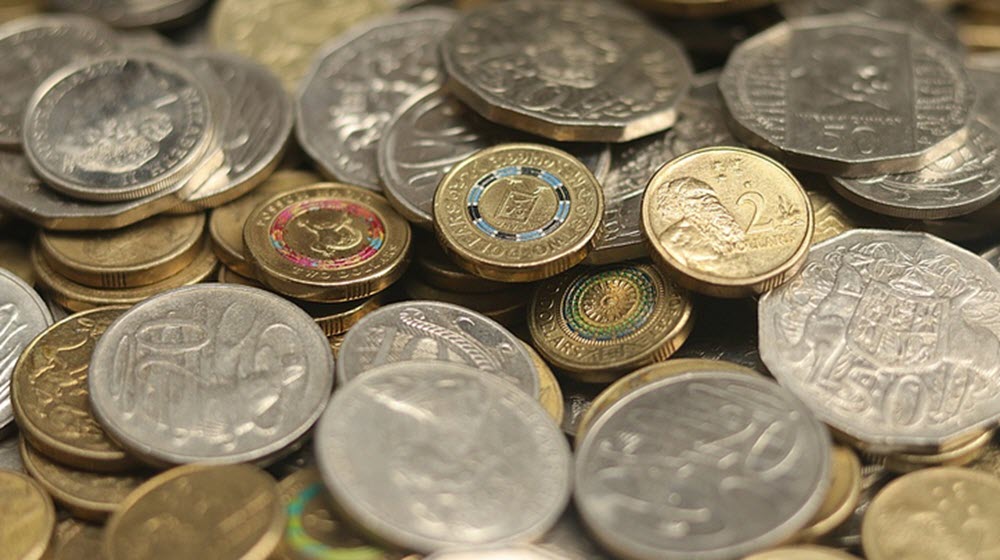Australian dollar
The Australian dollar is the currency of Australia, including its external territories: Christmas Island, Cocos (Keeling) Islands, and Norfolk Island. It is also officially used as currency by three independent Pacific Island states: Kiribati, Nauru, and Tuvalu.
The Australian dollar is one of the top-10 most traded currencies on the global currency market. It is generally regarded as a so-called commodity currency, since its value is strongly impacted by the state of the Australian commodity export industry.
In the year 2020, the currency pair AUD/USD was the fourth most heavily traded currency pair on the global fx market, out-ranked only by EUR/USD, USD/JPY, and GBP/USD. Also, the AUD/JPY pair was #11 on the list.

Australian coins
In the 21st century, the Australian dollar has become one of the top-10 most commonly held currencies in the official foreign exchange reserves (according to numbers published yearly by the IMF). Data from 2020 and 2021 show that it was more prevalent than the Swiss franc, but less prevalent than the Canadian dollar.
The Australian dollar is popular with retail currency traders for a variety of reasons, including:
- The relative freedom of governmental interventions when it comes the AUD´s movements on the FX market
- The general stability of the Australian economy
- The general stability of the Australian political situation
- The comparatively high interest rates in Australia (especially compared to Japan)
- The Australian dollar can be used to add diversity to a currency basket portfolio without investing in more exotic currencies.
- The Australian dollar can indirectly add more exposure to Asian economies.
- The Australian dollar can indirectly add more exposure to certain commodities.
Basic information about the Australian Dollar
- The ISO 4217 code for the Australian Dollar is AUD (numerical: 036).
- $ and A$ and AU$ are all used as symbols for the Australian dollar. A or AU is added in situations where it is necessary to distinguish the AUD from other currencies, such as the US$.
- The central bank for the Australian dollar is the Reserve Bank of Australia.
- One Australian dollar equals 100 cents. The symbol for the cent is c.
- It has been floating on the FX market since late 1983.
- The Australian dollar used to be a part of the Bretton Woods system.
Trivia
- The Australian dollar was introduced on 14 February 1966, when it replaced the Australian pound. The conversion rate was 2 Australian dollars for each Australian pound.
- So far, the highest valuation of the Australian dollar relative to the United States dollar occurred in 1973. At this time, the AUD was still pegged to the USD and had narrow fluctuation limits. On 9 September, the peg was adjusted to US$ 1.4875 and the band adjusted to US$1.485–US$1.490. On 7 December, the noon buying rate in New York City for cable transfers payable in foreign currencies reached its highest point of 1.4885 USD to one AUD dollar. The same thing happened again on 10 December.
- The highest valuation of the Australian dollar relative to the United States dollar since floating occured on 27 July, 2011, when the AUD reached 1.1080 against the USD. Analysts believed that this peak was spurred by a combination of the aftermath of Europe´s sovereign debt crisis and Australia’s strong ties to material importers in China and certain other Asian countries.
This article was last updated on: January 30, 2023